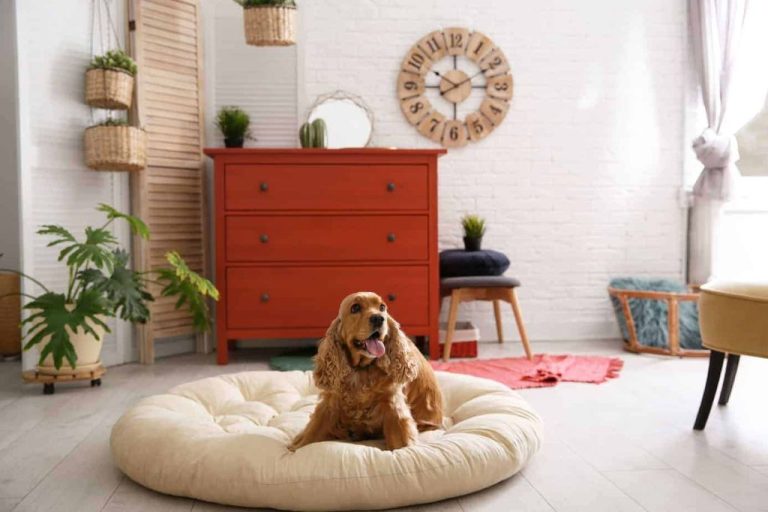The Beginner’S Guide To Feeding Your Dog A Healthy Diet
Proper nutrition is extremely important for a dog’s health and well-being. Feeding your dog a nutritious, balanced diet will provide them with the nutrients they need to thrive. This guide will cover the basics of canine nutrition, including determining your dog’s life stage, choosing high quality foods, reading ingredient labels, feeding proper amounts, establishing a schedule, and more. Following these tips will help ensure your dog receives all the vitamins, minerals, and nutrients they require for good health. A quality diet tailored to your dog’s needs can prevent health issues, provide energy, and extend your dog’s lifespan.
Determine Your Dog’s Life Stage
A dog’s nutritional needs change as they progress through different life stages. It’s important to feed your dog an age-appropriate diet to support their health.
Puppies require more calories, protein, fat, vitamins and minerals to support rapid growth and development. High quality puppy food should contain at least 22% protein and 8% fat (1).

Adult dogs need balanced nutrition to maintain ideal body condition. Look for food with about 18% protein and 5% fat for normal activity levels (2).
As dogs reach their senior years, their metabolism slows down. Senior dog foods provide fewer calories along with joint support. They typically contain 8-12% fat and increased fiber (3).
Consult your veterinarian to determine the optimal food and feeding amount based on your dog’s age, breed, activity level and health status. Feeding an age-appropriate diet sets the foundation for your dog’s lifelong health.
Sources:
(1) https://www.texvetpets.org/article/life-stage-nutrition-for-pets/
(2) https://vcahospitals.com/know-your-pet/nutrition-general-feeding-guidelines-for-dogs
(3) https://www.hillspet.com/dog-care/nutrition-feeding/dog-nutrition-for-every-lifestage
Choose High Quality Dog Food
Not all dog foods are created equal. It’s important to choose a high quality kibble that provides complete and balanced nutrition for your dog. Look for dog foods that meet the standards set by the Association of American Feed Control Officials (AAFCO) for complete and balanced nutrition (https://www.akc.org/expert-advice/nutrition/best-dog-food-choosing-whats-right-for-your-dog/).
High quality kibble will have a meat or meat meal, such as chicken, beef, lamb or fish, listed as the first ingredient. Meat meals contain concentrated sources of protein. Whole meats contain lots of water, so once cooked down their contribution is less than meals. Look for specific sources like chicken meal rather than generic meat meal (https://www.pvvet.net/post/qualities-of-the-ideal-dog-food.html).
Avoid dog foods with fillers like corn, wheat or soy in the first few ingredients. These are low quality and harder for dogs to digest. Artificial colors, flavors and preservatives are also signs of a lower quality food. Choose natural preservatives like vitamin E instead.
Reputable dog food companies like Royal Canin, Purina, Hill’s Science Diet and Blue Buffalo adhere to high standards and quality control. Be wary of boutique and grain-free brands following recent links to canine heart disease.
Talk to your vet for brand recommendations appropriate for your dog’s life stage, size, activity level and any health conditions. Feeding your dog a high quality diet is one of the best things you can do for their health.
Read the Ingredient Label
Reading the ingredient label is one of the most important things you can do when selecting a dog food. Ingredients are listed in order of weight, with the main ingredients listed first. You generally want to see a named meat source like beef, chicken, or salmon as one of the first 2-3 ingredients.
The first 5 ingredients make up the majority of the food. Avoid foods that list generic terms like “meat meal” and look for specific meal types like “chicken meal” or “lamb meal.” Meat meals are concentrated sources of meat protein. Make sure the first ingredient is not a cheap filler like corn, wheat, or soy. These provide less nutritional value.
You also want to see whole meats, meat meals, fish, eggs, and healthy fats high up on the list. Things like artificial colors, flavors, and preservatives should be avoided. Look for natural antioxidant sources like vitamin E instead. Reading the label helps you identify quality ingredients and avoid low quality fillers.
High quality foods will have multiple meat-based protein sources as the first 2-3 ingredients. This provides high protein levels to support your dog’s health. Meat and animal-based proteins also have optimal amino acid balance for dogs.
Citations:
https://vcahospitals.com/know-your-pet/deciphering-dog-food-labels
https://extensionpublications.unl.edu/assets/html/g1960/build/g1960.htm
Consider Your Dog’s Health
Medical conditions like food allergies or intolerances often require feeding dogs special therapeutic diets. According to the experts at VCA Hospitals, “Designer diets cover a range of options that target specific canine nutritional needs. While some designer foods include certain ingredients like novel proteins or hydrolyzed proteins to address food allergies, others are made with ingredients that help dogs with kidney disease, heart disease, or other medical problems.”
Common medical conditions that may require a special diet include:
- Food allergies – Diets containing novel or hydrolyzed proteins can help dogs with allergies avoid triggering ingredients like chicken, beef, dairy, or grains.
- Gastrointestinal issues – Some diets are designed to be highly digestible for dogs with sensitive stomachs or colitis.
- Kidney disease – Reduced protein, phosphorus, and sodium diets support kidney health.
- Heart disease – Diets lower in sodium can benefit dogs with heart conditions.
- Urinary issues – Special diets promote bladder health and prevent stones.
- Diabetes – Diets with regulated carbohydrates help control blood sugar.
- Obesity – Weight management diets provide fewer calories while still being nutritious.
It’s important to follow your veterinarian’s recommendations if your dog requires a special therapeutic diet for their health. Never make changes without first consulting your vet. With the right food tailored to their needs, you can help your dog manage their medical condition and live a happy, healthy life.
References:
https://vcahospitals.com/know-your-pet/designer-diets-whats-in-my-dogs-food
Feed the Proper Amount
It’s important to feed your dog the proper amount of food based on their life stage, size, and activity level. Feeding guidelines are usually provided on dog food packages based on your dog’s weight. These guidelines have been formulated by veterinary nutritionists and are a good starting point.
However, you may need to adjust up or down depending on your individual dog. It’s important not to overfeed or underfeed. Overfeeding can lead to obesity and other health problems, while underfeeding denies your dog key nutrients. Monitor your dog’s body condition and adjust food amounts if they become overweight or underweight.
In addition to food amount, pay attention to feeding schedule. Feeding smaller portions more frequently may better meet your dog’s needs. Consult your veterinarian if you are unsure of the proper feeding amount for your dog’s lifestyle and health.
Establish a Feeding Schedule
It is generally recommended to feed dogs set meals rather than free-feeding throughout the day. Feeding set meals helps maintain a consistent routine, monitors food intake, and can aid in potty training. Sample feeding schedules by age include:
Puppies 8-12 weeks: 4 meals per day
Puppies 3-6 months: 3 meals per day
Puppies 6-12 months: 2 meals per day
Adult dogs: 1-2 meals per day
Senior dogs: 2-3 smaller meals per day
When transitioning your puppy to an adult feeding schedule, gradually reduce the number of meals over a 7-10 day period. For example, offer 3 meals per day for a few days, then drop down to 2 meals a day. Keep an eye on your dog’s body condition and energy levels.
It’s generally recommended to feed adult dogs twice per day, once in the morning and once in the evening. However, some owners prefer to feed just one meal. As long as your dog maintains a healthy weight, feeding once daily is fine. Just be sure to monitor energy levels. Seniors may benefit from 3 smaller meals throughout the day.
Set a consistent schedule and stick to it. Feed approximately the same times every day and pick up uneaten food within 10-15 minutes. Providing meals at regular times can help reduce begging and ensure your dog feels satisfied. Contact your vet if you have questions about an optimal feeding schedule.
Provide Plenty of Fresh Water
Ensuring your dog has constant access to clean, fresh water is one of the most important aspects of their care. Water serves several critical functions for a dog’s health:
- It aids in digestion and nutrient absorption, carrying nutrients into cells and waste out of cells. Without sufficient water intake, your dog’s body cannot properly break down food and assimilate nutrients (The Importance of Water for Pets and Avoiding Pet Dehydration).
- Water facilitates metabolic reactions and temperature regulation. Dehydration prevents the body from properly regulating temperature (The Importance of Water).
- It acts as a shock absorber and lubricant for joints. Joints require hydration to prevent friction and cushion bones (How Much Water Should a Dog Drink?).
Dogs should have unlimited access to fresh, clean water at all times. Restricting water access can lead to potentially dangerous dehydration. Make sure your dog’s water bowl is kept full with clean water. Change the water at least twice a day. Additionally, always bring water for your dog on walks, hikes, road trips, or any excursion away from home.
Monitor Your Dog’s Weight
Keeping track of your dog’s weight is crucial for maintaining a healthy diet. Weigh your dog at least every 1-2 weeks to monitor any fluctuations. Use the same scale each time and weigh at the same time of day for consistency. Compare your dog’s weight against the ideal weight recommended by your veterinarian. If your dog’s weight starts to creep up or down, you may need to adjust their diet and exercise regimen.
Create a weight log to record your dog’s weight over time. This will help you identify any concerning trends early on. Some gradual weight gain may be normal as your dog ages, while rapid weight changes can signify an underlying health issue.
You can also monitor your dog’s body condition score, which involves feeling their ribs and waistline and assessing muscle tone. An overweight dog will have less definition around their waist and ribs. Contact your vet if your dog becomes overweight or loses weight unexpectedly for an exam and diet adjustment.
With regular weighing and body condition checks, you can keep your dog’s diet and activity levels optimized for their health and weight maintenance. Consult your vet for recommended weight ranges specific to your dog’s breed, age, and activity level.
Here are some tips for maintaining a healthy weight long-term:
- Adjust food portions or switch to a weight control formula if your dog gains weight.
- Add more exercise or enrichment activities if your dog loses weight.
- Use treats sparingly and reduce high-calorie table scraps.
- Divide daily food into multiple smaller meals.
With diligent monitoring and proactive adjustments, you can help your dog achieve an optimal weight and avoid obesity-related health risks.
Consult Your Veterinarian
The most important step in feeding your dog a healthy diet is to consult your veterinarian. Your veterinarian knows your dog’s unique needs and can recommend the optimal diet and feeding schedule for their life stage, activity level, and health status. Some dogs may require special therapeutic diets or have food allergies/intolerances that need accommodation.
Schedule an annual nutritional assessment with your veterinarian. They will evaluate your dog’s body condition score, weight trends over time, and other health factors to determine if your current diet is meeting your dog’s needs or if adjustments are required. Your vet can also run lab tests to check your dog’s vitamin, mineral, protein, and fat levels to further optimize their diet.
When transitioning your dog to a new diet, consult your vet on the proper way to do so gradually over 5-7 days. Sudden changes can upset your dog’s digestive system. Your vet can guide you in choosing a high quality dog food brand and formula tailored to your dog’s needs and preferences.
By partnering with your veterinarian on nutrition, you can be sure your dog’s unique dietary requirements are met at every stage of life. An individualized approach helps optimize your dog’s health and wellbeing. For further guidance, check out the VCA Hospitals feeding guidelines and AVMA nutrition resources.






